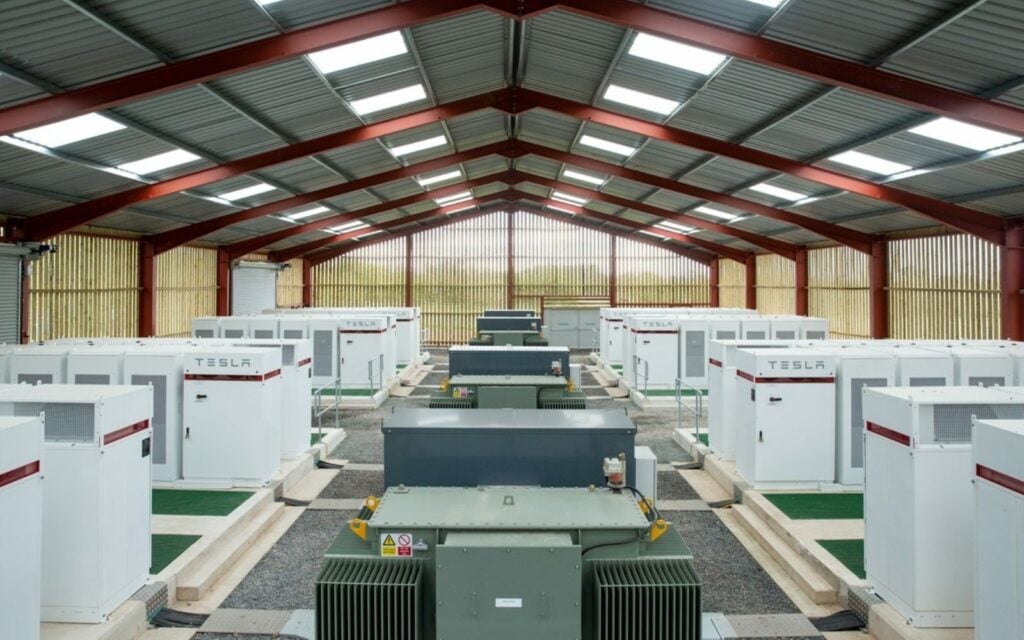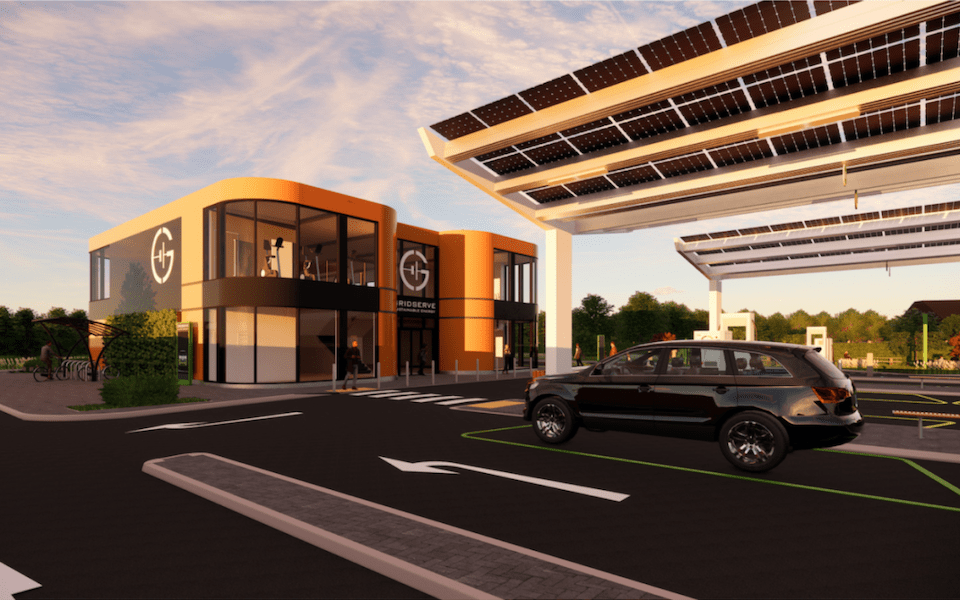
The UK’s energy storage market has grown rapidly in the past few years, but it needs to go much further in terms of scale and duration of the systems deployed. It’s a no-brainer that storage will be a key enabler of net zero emissions, but some unresolved challenges still make it a complex sector to navigate, as Antonia Silvestri and Gary Roscoe, partners at law firm TLT, explain.
The UK’s journey to net zero is driving an increase in the amount of renewable generation on the grid, particularly large-scale ground mounted solar and onshore wind where a combination of technical know-how, economies of scale and competitive investor interest are making them viable on a subsidy-free basis.
Enjoy 12 months of exclusive analysis
- Regular insight and analysis of the industry’s biggest developments
- In-depth interviews with the industry’s leading figures
- Annual digital subscription to the PV Tech Power journal
- Discounts on Solar Media’s portfolio of events, in-person and virtual
However, you only have to look out of the window to know that the weather isn’t always doing what we need or want it to be doing. And this is where energy storage plays such a key role in providing flexible grid balancing services – taking energy from those assets when generation conditions are optimal and there is excess on the system and pushing the stored renewable energy back into the grid when generation is low.
Energy storage challenges and opportunities
In theory it’s a simple idea – increased renewable generation informs an increased need for the flexibility provided by energy storage. However, with the exception of pumped hydro storage, this is a nascent asset class which has presented its own challenges in terms of capital costs, lead in times, lack of track record, revenue certainty and market signals, particularly when we move away from short-duration and look at energy storage in the context of large-scale and long-duration electricity storage (LLES).
Currently energy storage, in the majority, provides short-duration flexibility and while it is estimated that there is over 10GW of projects in planning, deployment has somewhat been hampered by investor confidence.
The uncertainty of revenue streams and the need to stack revenue to make a project viable makes it difficult to model the bankable debt funding needed for large-scale deployment.
However, new merchant risk models and high liquidity in the equity market have re-focused investor interest in this technology.
The highly competitive nature of the equity market is channelling capital into newer technologies such as energy storage and driving investment downstream, meaning that for developers with a track record in energy storage obtaining capital investment has never been easier.
What is interesting is that most projects are coming to market at shovel-ready or greenfield stage rather than as operational projects – though as more projects come on-line this trend may shift.
The debt funding market has also been innovating around debt solutions, with structures informed by asset and project finance and, more recently, tranche facilities tailored to the tiered risk profile of the battery energy storage system revenue model.
This opening of the debt market has already widened out the role of energy storage. For example, Santander’s non-recourse debt facility to battery storage project owner and operator Zenobe Energy will enable the development of what is expected to be the largest battery storage development in Europe (100MW / 170MWh) and the project has also been awarded the first reactive power contract offered by National Grid Electricity System Operator (ESO).
Embedding batteries in multi-technology schemes
A final piece of the energy storage puzzle is multi-technology projects, where energy storage is being added to solar or onshore wind and even EV charging infrastructure (EVCI) in some cases, either from the outset or with the option to add at a later date as a future-proofing mechanism.
From an investor point of view, these projects could prove to be an easier win, especially when optioned by a developer with a strong track record in the main technology – solar or onshore wind – as this will help carry investor confidence in the overall project.
There is huge potential for multi-technology projects to be used in the context of private wire generation and as more organisations seek to secure green energy this could be a viable option for those who don’t want to operate their own assets. In addition, they can be utilised where grid capacity is limited and a behind-the-meter solution which combines solar, particularly rooftop or carport, with storage and EVCI could be beneficial.
However, it is worth noting that when looking at grid connected multi-technology projects the most viable business case is for these assets to be treated as if they were stand-alone assets, as this enables the layering of multiple revenue streams.
The short-duration energy storage market is multifaceted and it is easy to see the essential role that it will continue to play in balancing demand both on-the-grid and behind-the-meter as the UK transitions to net zero, particularly as increased equity investor confidence and new debt funding models drive investment into this technology.

Making large-scale, long-duration energy storage workable
While the short-duration market is well recognised, the role of LLES is less defined both in terms of viability, technology and market impact. In its recent call for evidence on facilitating the deployment of LLES, the government Department for Business, Energy & Industrial Strategy (BEIS) considers the role of LLES in facilitating a net zero energy system and looks for potential approaches to deployment.
The advantage of LLES is that it would have the capacity to balance the grid over days, weeks or months rather than the current short durations. However, for LLES to be viable it will need to overcome similar hurdles to battery and pumped storage in terms of high capital costs, long lead time, lack of track revenue with new technologies and, of course, the investment challenge.
And for LLES this challenge may be exacerbated due to the novel nature of technologies such as gravitational storage, redox flow batteries, compressed or liquid air energy storage (CAES and LAES), power-X-power technologies and the injection of investment needed to support their testing and development.
As it is difficult to predict the exact mix of technologies needed to optimise the decarbonisation of the energy system in the long term, the question will be – where do you funnel the capital?
If LLES has such hurdles to overcome then why is it being considered?
In part because there is a recognition that low carbon energy needs to come from diverse sources so that the UK isn’t too dependent on one technology. And it is thought that LLES – alongside other technologies such as flexible demand, short-duration storage, thermal generation with carbon capture, usage and storage (CCUS) and emerging hydrogen technologies – could provide this balance.
It would seem, therefore, that LLES is another essential piece of the renewable energy generation puzzle but how do we unlock the funding needed to make this a reality?
Other high capital cost low carbon technologies such as renewable generation have received subsidies which have de-risked investment in the nascent phases. Without similar support, long lead times, technological uncertainties and a lack of bankable revenues may make it difficult to attract investment into this area.
This is one of the issues which BEIS’ consultation has been looking to address. Current routes to market include arbitrage trading, PPA’s, ancillary services and capacity market contracts, however developers still need to stack revenue streams to build a viable investment case.
While this may still be the case going forward, a number of markets which are undergoing reform, such as network competition, Stability Pathfinders (seeking the most cost-effective ways to ensure network stability) and other ESO services and the Capacity Market, could provide additional revenue and be beneficial for the development of these assets.
These reforms on their own are not likely to create a strong enough incentive to facilitate the development of the LLES market. While it is expected that price signals will strengthen as the amount of renewable generation increases throughout the 2030s this is only likely to stimulate the development of LLES in the later half this decade.
This presents a bit of a quandary – if LLES is to play a role in balancing the variable of renewable generated needed by the mid-2030s it needs to be built now.
From theory to practice
It has been suggested that a range of mechanisms such as Cap & Floor mechanism, the adaption of the Contract for Difference (CFD) Framework or further reforms to the Capacity Market could bring forward investment in LLES and it will be interesting to see how the outcome of the consultation informs the future direction of the market.
Looking to the future, short-duration energy storage will continue to play a critical role in grid balancing as the amount of renewable generation increases. Supported by both debt and equity investment we would expect to see a considerable uptick in both stand-alone projects and multi-technology projects over the coming months. It is more difficult to predict the role that LLES will play, as a lot of factors need to line up to make LLES a viable player within the low carbon solution.
It is likely that significant reform will be required alongside new support mechanisms to entice the investment needed.
While we continue to “watch this space”, we also need to think proactively about what could be done to accelerate the deployment of LLES and put into work the concrete steps that will unlock such capabilities in the short- to medium-term.
As climate change has become an urgent, short-term problem, so must be the development of large-scale, long-duration energy storage.
Antonia Silvestri and Gary Roscoe, are partners at UK-based law firm TLT with expertise on clean energy deals, including transactions concerning energy storage.

